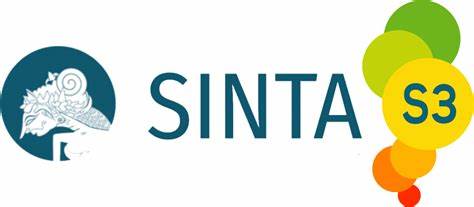EXPLORING CULTURALLY RESPONSIVE TEACHING IN INDONESIAN ELT: PRE-SERVICE TEACHERS’ PERCEPTIONS AND EXPERIENCES
Abstract
This study examines the perceptions, practices, and challenges faced by Indonesian preservice English teachers in implementing Culturally Responsive Teaching (CRT) in English Language Teaching (ELT), drawing on Gay’s (2010) framework. Employing a qualitative case study design, data were collected from five postgraduate preservice teachers through classroom observations, pre- and post-observation interviews, and reflective writing, and were analyzed thematically. Findings indicate that participants perceived CRT as a meaningful and empowering pedagogy that affirms learners’ cultural identities, enhances engagement, and contextualizes instruction. Implementation strategies included integrating local and youth cultures into lessons and leveraging technology for student-centered learning. However, participants also faced key challenges: limited conceptual grounding in CRT, disconnects between curriculum policy and classroom realities, scarcity of relevant materials, and a theory–practice gap. As a result, culturally responsive efforts were evident but partial and constrained by structural and institutional factors. These findings reveal a recognition–implementation gap, pointing to the need for more robust CRT training in teacher education, alignment between policy and pedagogy, and development of localized teaching resources. This study contributes to global conversations on CRT in multilingual settings and offers insights for advancing inclusive, culturally relevant ELT practices in Indonesia.
References
Clark, V. L. P., & Braun, V. (2021). Thematic analysis: A practical guide. SAGE
Publications.
Creswell, J. W. (2013). Qualitative inquiry & research design: Choosing among five approaches (3rd ed.). SAGE.
Douglas, C. M. (2020). A case study for culturally responsive teaching in Glodok, Jakarta, Indonesia: The negotiation of identity and instruction for a Chinese-Indonesian educator. International Journal of Chinese Education, 9(1), 113–126. https://doi.org/10.1163/22125868-12340122
Fatmawaty, R., Retnaningdyah, P., & Musthofa, A. (2024, December). The Implementation of Culturally Responsive Teaching within the Merdeka Curriculum through the Kampus Mengajar Program. In 5th International Conference on English Language Teaching (ICON-ELT 2024) (pp. 188-201). Atlantis Press. https://doi.org/10.2991/978-2-38476-333-7_15
Gay, G. (2015). Connections between classroom management and culturally responsive teaching. In E. T. Emmer & E. J. Sabornie (Eds.), Handbook of classroom management (pp. 39–56). Routledge.
Gintoro, D., Kesuma, A. T., Anggraena, Y., et al. (2024). Pembelajaran dan asesmen anak usia dini, pendidikan dasar, dan pendidikan menengah. Badan Standar, Kurikulum, dan Asesmen Pendidikan (BSKAP), Kementerian Pendidikan, Kebudayaan, Riset, dan Teknologi.
Hidayati, A. F., Yuliati, Y., & Hutagalung, F. D. (2024, July). The implementation of culturally responsive teaching in ELT classrooms within the concept of emancipated curriculum. In ELT Forum: Journal of English Language Teaching (Vol. 13, No. 2, pp. 150-162). https://doi.org/10.15294/elt.v13i2.7731
Idrus, F., & Sohid, M. (2023). Teachers’ expectations and challenges in using culturally responsive teaching (CRT) strategies in the ESL classroom. Journal of Language Teaching and Research, 14(3), 629–635. https://doi.org/10.17507/jltr.1403.10
Idrus, F., Ramli, L. N., & Habib, N. J. (2023). Exploring preservice teachers’ experiences of implementing culturally responsive teaching in the ESL classrooms. Theory and Practice in Language Studies, 13(3), 766–776. https://doi.org/10.17507/tpls.1303.26
Kidwell, T. (2019). Teaching about teaching about culture: The role of culture in second language teacher education programs. TESL-EJ, 22(4). https://tesl- ej.org/wordpress/issues/volume22/ej88/ej88a8/
Kong, D., Zou, M., & Chen, J. (2022). English as a foreign language teacher engagement with culturally responsive teaching in rural schools: Insights from China. Frontiers in Psychology, 13, 990363. https://doi.org/10.3389/fpsyg.2022.990363
Koro, R., & Hagger-Vaughan, L. (2025). Collaborative curriculum making at a local level: the Culture and Language integrated Classrooms (CLiC) project–integrating linguistic and cultural learning in the day-to-day practices of language teachers. The Language Learning Journal, 1-19. https://doi.org/10.1080/09571736.2025.2475107
Kramsch, C. (2013). Culture in foreign language teaching. Iranian journal of language teaching research, 1(1), 57-78.
Lucas, T., & Villegas, A. M. (2013). Preparing linguistically responsive teachers: Laying the foundation in preservice teacher education. Theory Into Practice, 52(2), 98–109. https://doi.org/10.1080/00405841.2013.770327
Merriam, S. B., & Tisdell, E. J. (2016). Qualitative research: A guide to design and implementation (4th ed.). Jossey-Bass.
Munandar, M. I., & Newton, J. (2021). Indonesian EFL teachers’ pedagogic beliefs and classroom practices regarding culture and interculturality. Language and Intercultural Communication, 21(2), 158–173. https://doi.org/10.1080/14708477.2020.1867155
Nurbatra, L. H., & Masyhud, M. (2022). Infusing culturally responsive teaching in higher education: Insights for multicultural education in Indonesia. Journal of Innovation in Educational and Cultural Research, 3(4), 722–730. https://doi.org/10.46843/jiecr.v3i4.321
Paris, D., & Alim, H. S. (2017). Culturally sustaining pedagogies: Teaching and learning for justice in a changing world. Teachers College Press.
Rima, R., Muhyidin, A., Leksono, S. M., & Jamaludin, U. (2024). Exploring culturally responsive teaching practices in English language teaching at high schools in Banten Province: Perceptions, strategies, challenges, and opportunities. Edukatif: Jurnal Ilmu Pendidikan, 6(3), 2145–2155. https://doi.org/10.31004/edukatif.v6i3.6620
Setyono, B., & Widodo, H. P. (2019). The representation of multicultural values in the Indonesian Ministry of Education and Culture-endorsed EFL textbook: A critical discourse analysis. Intercultural Education, 30(4), 383–397. https://doi.org/10.1080/14675986.2019.1548102
Siwatu, K. O., Chesnut, S. R., Alejandro, A. Y., & Young, H. A. (2016). Examining preservice teachers' culturally responsive teaching self-efficacy doubts. The Teacher Educator, 51(4), 277-296.
Sukmawati, I., Imron, A., & Soesanti, S. (2024). Implementation of the RADEC (Read, Answer, Discuss, Explain, Create) model integrated culturally responsive teaching to improve students's 4C skills. Jurnal Teori dan Praksis Pembelajaran IPS, 9(2), 114-130.
Yuliantari, S., & Huda, T. (2023). Integration of culturally-responsive teaching in English learning. Pubmedia Jurnal Pendidikan Bahasa Inggris, 1(1), 8-8.
Downloads
Published
Issue
Section
License

This work is licensed under a Creative Commons Attribution-ShareAlike 4.0 International License.
The author is responsible for acquiring the permission(s) to reproduce any copyrighted figures, tables, data, or text that are being used in the submitted paper. Authors should note that text quotations of more than 250 words from a published or copyrighted work will require grant of permission from the original publisher to reprint. The written permission letter(s) must be submitted together with the manuscript.




